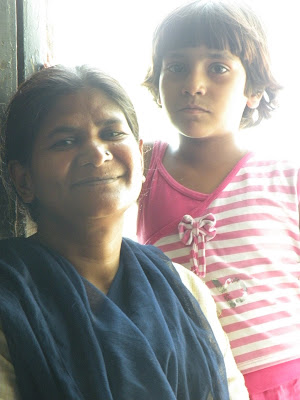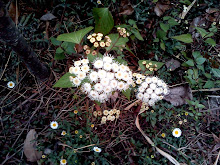
Najma ba'aji and I were sitting together and in that twenty minute ride she hurriedly told me her story, with an openness that was unique and a confidence that was inspiring.
In the last few weeks through the course of a project "A Journey to Find Our Freedom Songs", I've been visiting the New Junta School in Junta Colony, Seelampur regularly. I often bump into Najma ba'aji at the center and haven't helped but notice that when she walks in to the center there's just a flicker of discomfort in the form of silence and cold stares. While the girls are civil they definitely are not happy to see her. But she is least bothered. She comes in and observes our sessions, talks to the girls, at times takes on a self-appointed role of matron with her "matronly" advice. But she is always quick to add, "I have suffered enough. Learn from my story..." obviously the sort of thing that most upsets teenagers anywhere.
She was forcibly married off at a very young age. After having been continuously harassed by her in-laws for more dowry she returned to her village near Chandigarh. Her mother could offer her no shelter, only sympathy for her "sorry fate" and the advice that she should return to her husband's home and get used to his violence and harassment. Today, when she spoke of this incident to me, there was a slight tremor in her voice and some regret. She was hurt then that her parents turned their backs on her when she needed them. At the time she could only react by saying that she would never return to their house again. But neither did she go back to her husband's house. Instead she made her way to Delhi. Here she soon married another man, in the hope of some security. Her second husband was a smack addict and being unable to cope with his addiction she too got hooked on to the drug. She did smack for fourteen years. After her husband died, she chose to be part of a rehabilitation program run by an NGO in Seelampur. She has been off the drug for the last five years. In this time she met Ahmed bhai and married him. He plies a rickshaw for school children. He's also been active with AITUC in Seelampur. While she has been working with an NGO as an HIV/AIDS peer officer in the area. She talks to women about HIV/AIDS, encourages them to get tested. She provides the first level of support through counseling to women who have tested positive and helps them to access medical treatment. Her role in the community is obviously not a very popular one. She faces immense amount of pressure from both men and women. She openly shares her own life experiences with young girls who face high risks in the area and continuously talks to them about the importance of finishing their education and finding means to be economically independent. Her work isn't easy under the circumstances and many young girls are told not to speak with her by their family members.





